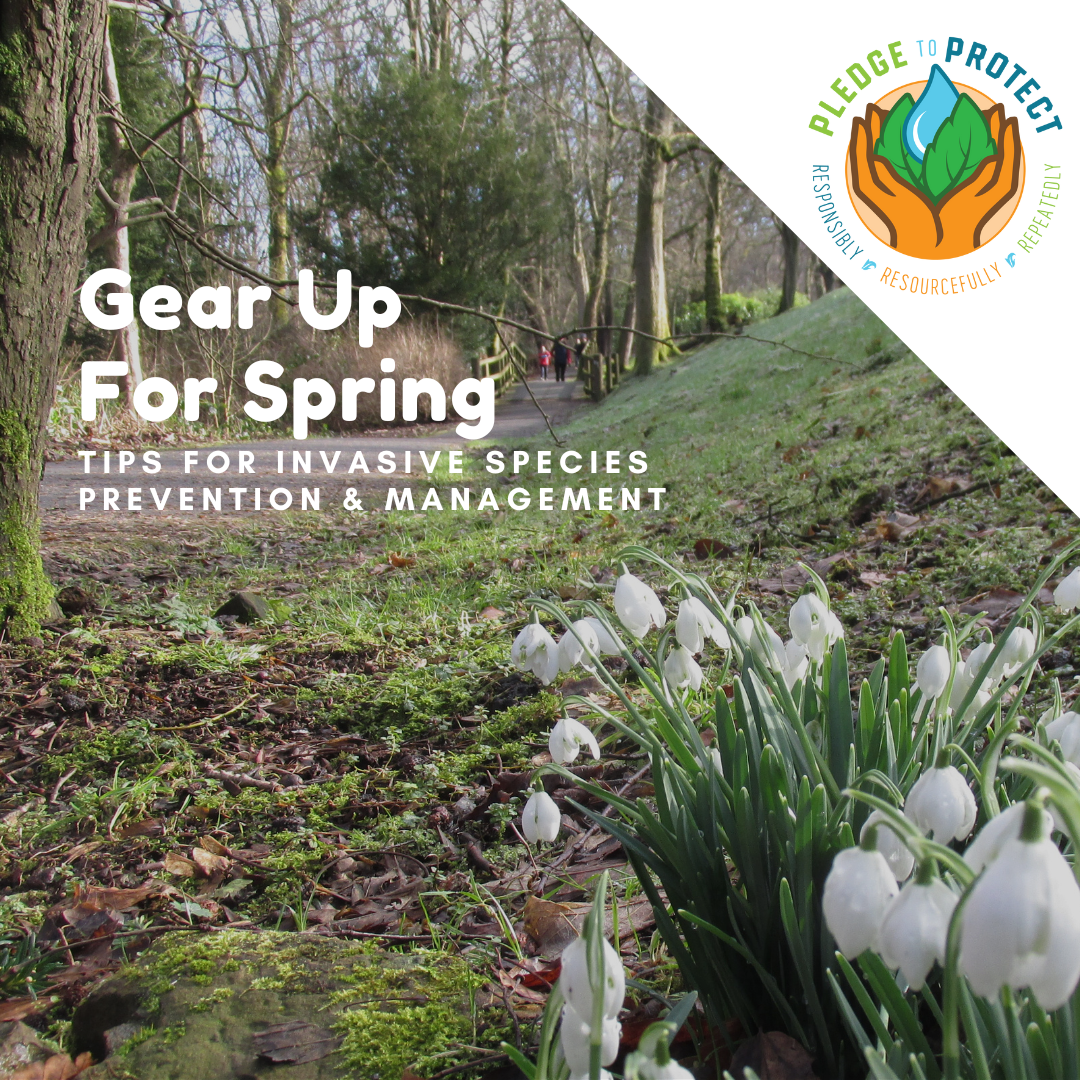Spring is here and there are many ways you can help prevent the spread of invasive species while you enjoy your favorite springtime activities. Check out the tips and resources below to get gear up for spring!

Earth Month Activities
April is Earth Month! Take action by joining volunteer efforts and events, becoming a climate-smart gardener, aiding community science, and learning about invasive species that threaten your region.

Get Involved!
One of the most rewarding ways to act is to get involved in your community! SLELO PRISM and our partners invite community members to join us for volunteer efforts and events, including hikes, paddles, invasive species removals, and site restoration efforts.
At a statewide level, you can get involved with the Partnerships for Regional Invasive Species Management (PRISM). The PRISM network raises awareness of invasive species, provides prevention guidance, and are involved in the management of invasives across the state. Click the link below to learn more about the PRISM network.

Aid Community Science
You can aid community science by reporting invasive species observations to NYiMapInvasives- New York’s invasive species database. Using the NYiMapInvasives mobile app or website you can easily report presence and distribution data directly to invasive species management professionals. Data helps to locate new invasive species populations and strengthens management efforts.

Tips for Birding
The excitement of returning birds may inspire you to put out birdfeeders. However, you should avoid placing feeders in hemlock trees because doing so will encourage visits from birds which may result in the introduction or spread of hemlock woolly adelgid (HWA)-an invasive insect that kills hemlock trees. From March through April, second-generation hemlock woolly adelgid eggs hatch into nymphs or “crawlers”. During this time, crawlers can easily attach to birds and be spread to new areas.

Tips for Gardening
Spring is an exciting time to get your hands in the dirt and start planting your garden! One of the best ways you can prevent the spread of invasive plants is by choosing to grow native plants in your garden, as many desirable exotic plants have become invasive over time. Not only are native plants beautiful, but they provide food and habitat for native wildlife, and often require less maintenance than exotic ornamental plants. When choosing native plants to support pollinators, be sure to avoid cultivar varieties as they are often altered in a way that makes them unusable to pollinators. Learn more about native alternatives to common invasive plants in this featured blog.
Get a Head Start on Controlling Invasive Plants

Invasive plants often leaf out earlier than native plants. Some early emerging invasive plants you may start to notice popping up are giant hogweed, wild parsnip, garlic mustard, honeysuckle, and on the aquatic side, curly-leaf pondweed. Getting a head start on controlling these early emerging invasive plants will help you keep them in check during the growing season. Begin by scouting your property for new seedlings of invasive plants. The softer ground in the spring makes it easier to pull or dig out plants. Applying landscape paper or plastic that blocks out the sun in early spring also helps to hinder the growth of terrestrial and aquatic invasive plants. It’s also easier to access and cut back woody bushes or vines in the spring which can help to weaken or kill some plants before the growing season. However, in some cases, cutting back stems can promote growth which is the case for honeysuckle as well as, common and glossy buckthorn, these plants require a treatment of herbicide after cutting to keep them from resprouting. Learn more about early emerging invasive plants and how to control them in this Featured Blog.
Virtual Toolboxes
Visit the Protector’s Virtual Toolboxes below to access resources themed for each category, and to learn more about how to protect your favorite outdoor spaces from invasive species.
Lands & Trails
Lands & Trails
Forests
Waters
Gardens
Communities
Did you enjoy this blog post? Take our Pledge to Protect and get monthly emails showcasing actions you can take to protect your favorite hiking trails, paddleways, forests, garden, and community from the impacts of invasive species!
Take the Pledge to Protect
The Pledge-to-Protect is a fun, positive, inviting, engaging and rewarding way to participate in invasive species prevention and management.
|
|



